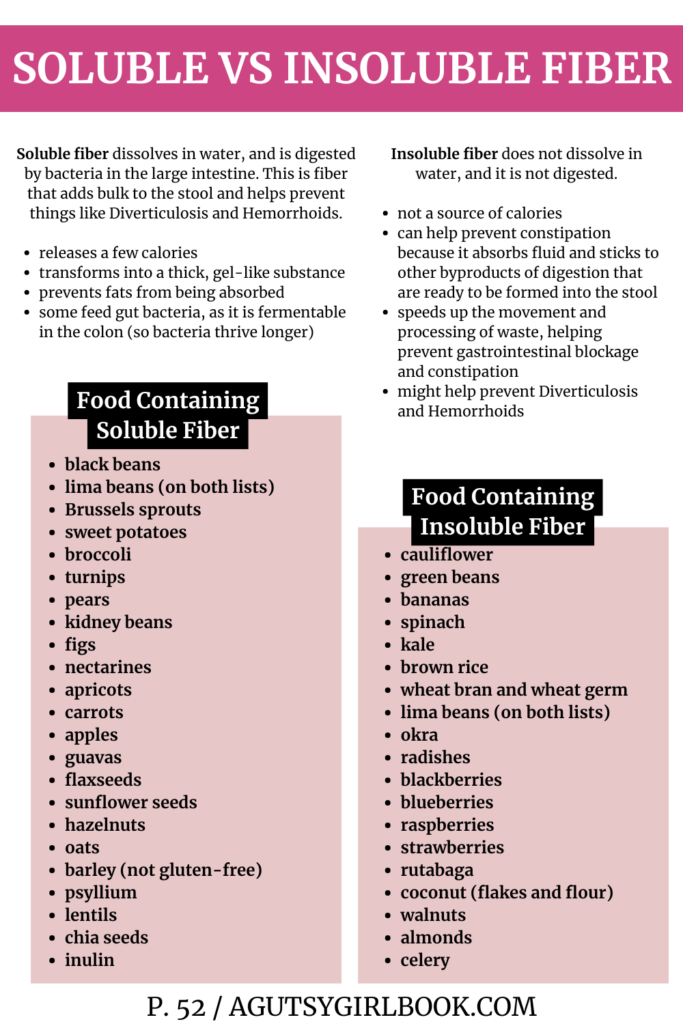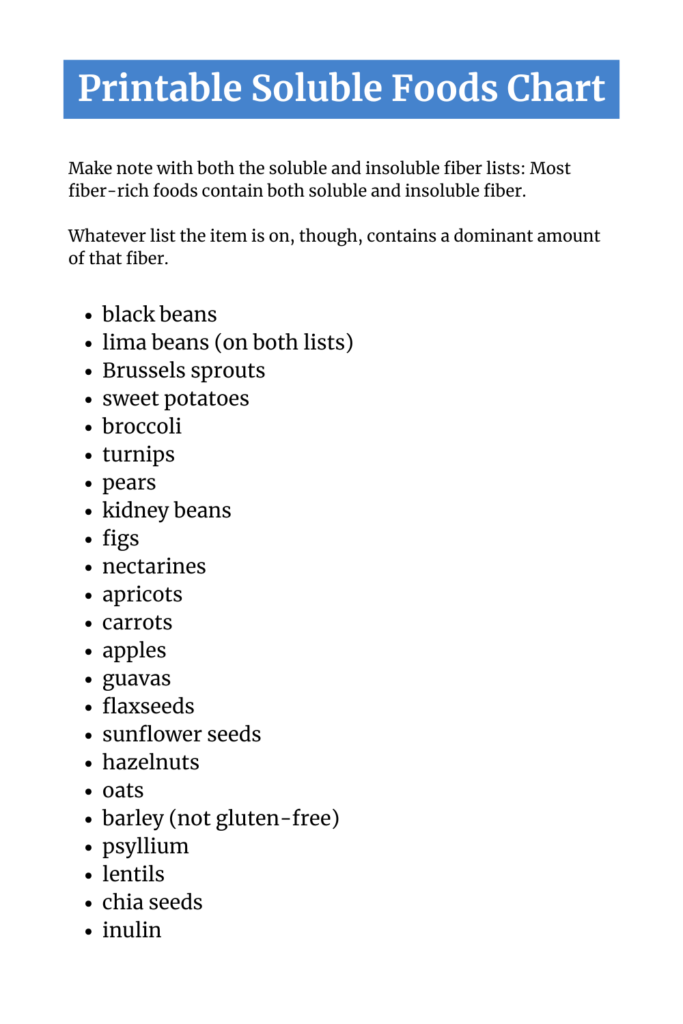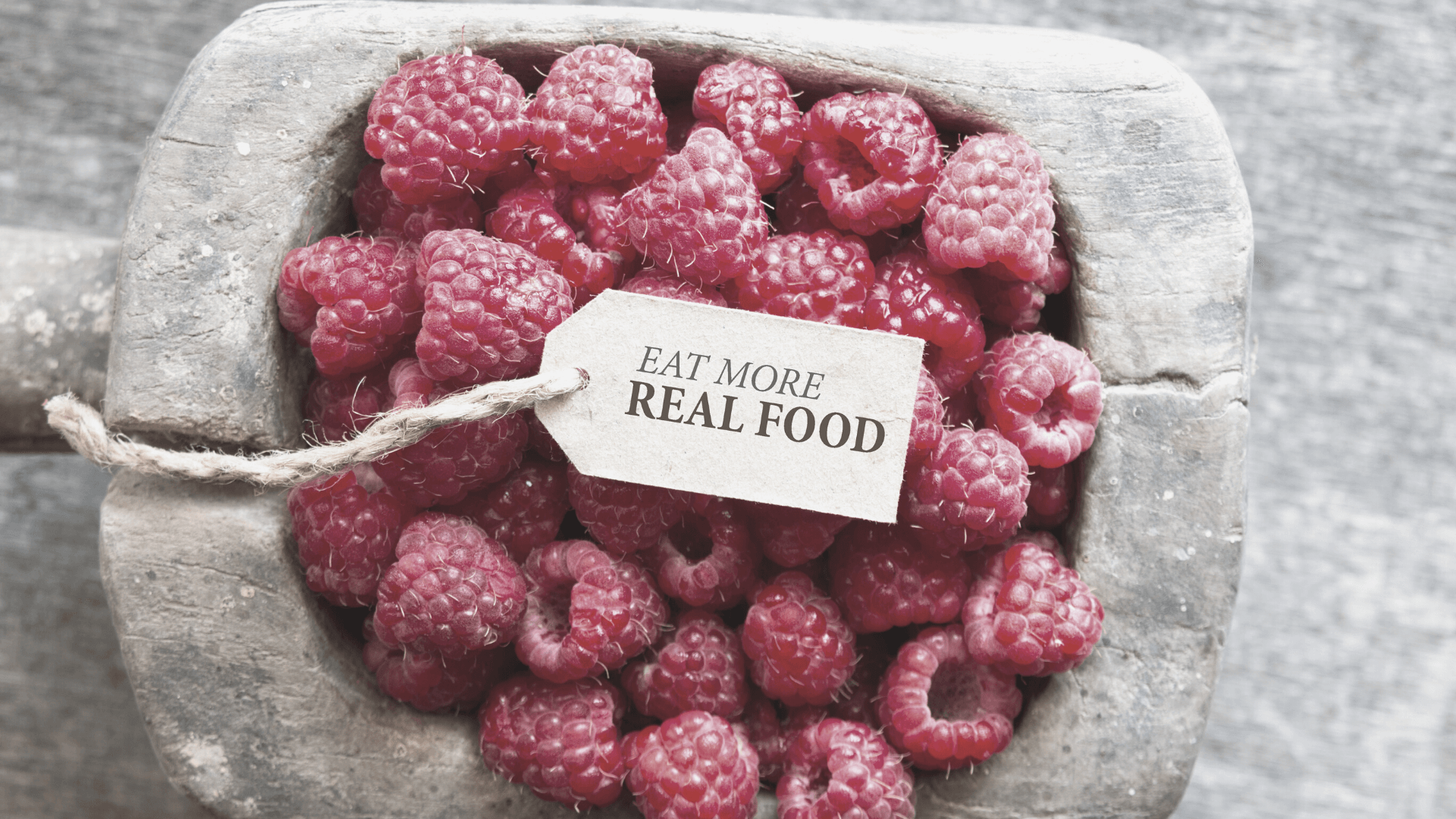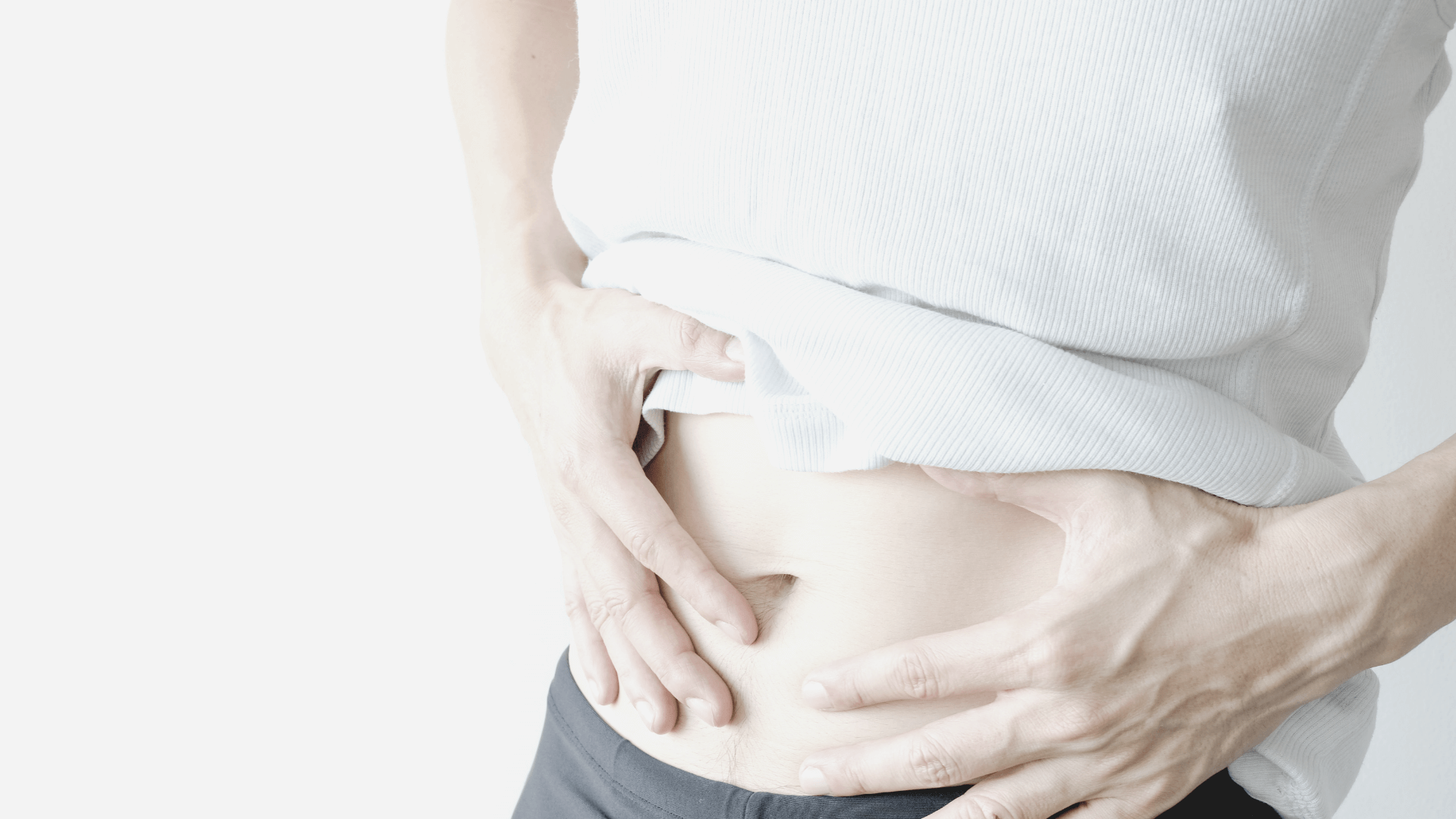Let’s break down soluble vs insoluble fiber, plus I’ll share with you a printable soluble fiber foods chart.
There are different types of fiber: soluble + insoluble.
If you have irritable bowel syndrome and/or inflammatory bowel disease, you may tolerate certain kinds of fiber better than others.
My job and goal for today is to break them both down to help you better understand soluble vs insoluble fiber.
Soluble vs Insoluble Fiber
Click HERE to save this blog post for later.

In general, dietary fiber is all parts of a plant-based food that cannot be digested or absorbed by the body.
It is a complex carbohydrate – a type of carbohydrate that does not raise blood sugar levels.
And it’s an essential nutrient that we must get from our diet; the body does not make fiber on its own.
Printable Soluble Fiber Foods Chart
Click HERE to save this chart for later + print it off the PDF HERE!

Soluble Fiber
Soluble fiber dissolves in water, and is digested by bacteria in the large intestine.
This is the fiber that adds bulk to the stool and it helps prevent things like Diverticulosis and Hemorrhoids.
- releases a few calories
- transforms into a thick, gel-like substance
- prevents fats from being absorbed
- some feed gut bacteria, as it is fermentable in the colon (so bacteria thrive longer)
Examples of Food Containing Soluble Fiber
Make note with both the soluble and insoluble fiber lists: Most fiber-rich foods contain both soluble and insoluble fiber.
Whatever list the item is on, though, contains a dominant amount of that fiber.
- black beans
- lima beans (on both lists)
- Brussels sprouts
- sweet potatoes
- broccoli
- turnips
- pears
- kidney beans
- figs
- nectarines
- apricots
- carrots
- apples
- guavas
- flaxseeds
- sunflower seeds
- hazelnuts
- oats
- barley (not gluten-free)
- psyllium
- lentils
- chia seeds
- inulin, which contains all of THESE foods
What Does Insoluble Fiber Refer To?
Insoluble fiber does not dissolve in water, and it is not digested by the digestive system.
- not a source of calories
- can help prevent constipation because it absorbs fluid and sticks to other byproducts of digestion that are ready to be formed into the stool
- speeds up the movement and processing of waste, helping prevent gastrointestinal blockage and constipation
- might help prevent Diverticulosis and Hemorrhoids
Examples of Food Containing Insoluble Fiber
- cauliflower
- green beans
- bananas
- spinach
- kale
- brown rice
- wheat bran and wheat germ
- lima beans (on both lists)
- okra
- radishes
- blackberries
- blueberries
- raspberries
- strawberries
- rutabaga
- coconut (flakes and flour)
- walnuts
- almonds
- celery
Can you eat too much fiber?
So, there are many things you’re thinking right now and wanting to know more about.
First, can you consume too many high fiber foods?
The answer is likely not, since the Hadza people consume 100+ grams per day.
HOWEVER……
Should I Eat Fiber Right Now?
As I mentioned in How to Achieve Optimal Microbiome Diversity,
Depending on age and gender, the recommended daily amounts of fiber are anywhere from 25-30g.
And yet, the average American consumes just 15g per day, which is half of the recommended amount of fiber.
I know this is the main question you have. So I’ll help you break it down based off of both research and personal experience.
Here are the 5 things to think about for your own situation:
1] Soluble fiber feeds gut bacteria
And this is supposed to be a good thing…..if you have the “good” bacteria going on.
If not, then what? That’s right. Soluble fiber will still feed your bacteria.
What’s the state of your gut bacteria?
2] Insoluble fiber speeds up movement
If you already are having a lot of diarrhea, this might not be your best option in your quest for higher fiber content foods.
3] Water, water, and more water
If you’re eating a lot of fiber, it’s a good idea to drink plenty of water with it as well.
Otherwise, your chances for constipation increase.
4] Type of fiber PLUS….
Each food listed above is made up of more than just fiber.
Take for instance cauliflower. Cauliflower contains insoluble fiber, but it also contains high amounts of the Polyol-mannitol.
At just 1 serving (3/4 cup), cauliflower is a high-FODMAP food.
If you have active SIBO (small intestine bacterial overgrowth) and/or do not tolerate FODMAPs (mannitol in particular), this might not be your best fiber option.
5] How is that working for you?
Hands down, best question you can ask yourself, “How is this working for me?”
If you’re recording, tracking, and paying attention through your gut healing journaling system, this will be crystal clear.
Eating Too Much Fiber
The way to determine if you are eating too much fiber (for you) is to keep track in your gut healing journal.
You can use the end “Notes” pages in my 90-day gut healing journal to keep track of some of the foods mentioned above.
Then, when you’re tracking and recording on a daily basis see how soluble vs. insoluble fiber is affecting you personally.
Take into consideration the 5 things above and record on them in the journal.
You can get a PDF download of the journal right now by clicking HERE.
Otherwise, grab the full, spiral-bound version to ship directly to your doorstep.



Did you come to A Gutsy Girl today because you just want to optimize your gut health?
In other words, you have no digestive health issues, are having regular bowel movements, but you’re looking to ensure it stays the healthiest it can?
Then by all means, please don’t overthink soluble vs insoluble fiber.
Both serve a purpose, and the health benefits of fiber are countless.
Your goal should be,
How can I not only get enough fiber, but but how can I get the most grams of dietary fiber per day?!
Remember, the Hadza people consume 100+ grams of fiber per day. Goals.
Sources: HERE, HERE, HERE, and HERE.
If you liked this post, you might also enjoy:
- Constipation Printable List of High Fiber Foods
- Printable List of High Fiber Foods (Top 15 Low-FODMAP High-Fiber Foods)
- Reasonable SIBO
Xox,
SKH
🤰 bloating be gone! weight loss through optimal gut health for women
💃ʜᴇᴀʟ ʏᴏᴜʀ ɢᴜᴛ. ʜᴇᴀʟ ʏᴏᴜʀ ʟɪfe.
🫶🏻 founder gutbyome.com




![Elimination Diet Food List [Phase 1]](https://agutsygirl.com/wp-content/uploads/2020/08/green-elimination-diet-featured-agutsygirl.com_.png)
![Why Stress May be Your Worst Enemy [Episode 39, Short #1]](https://agutsygirl.com/wp-content/uploads/2022/06/stress-featured.png)
